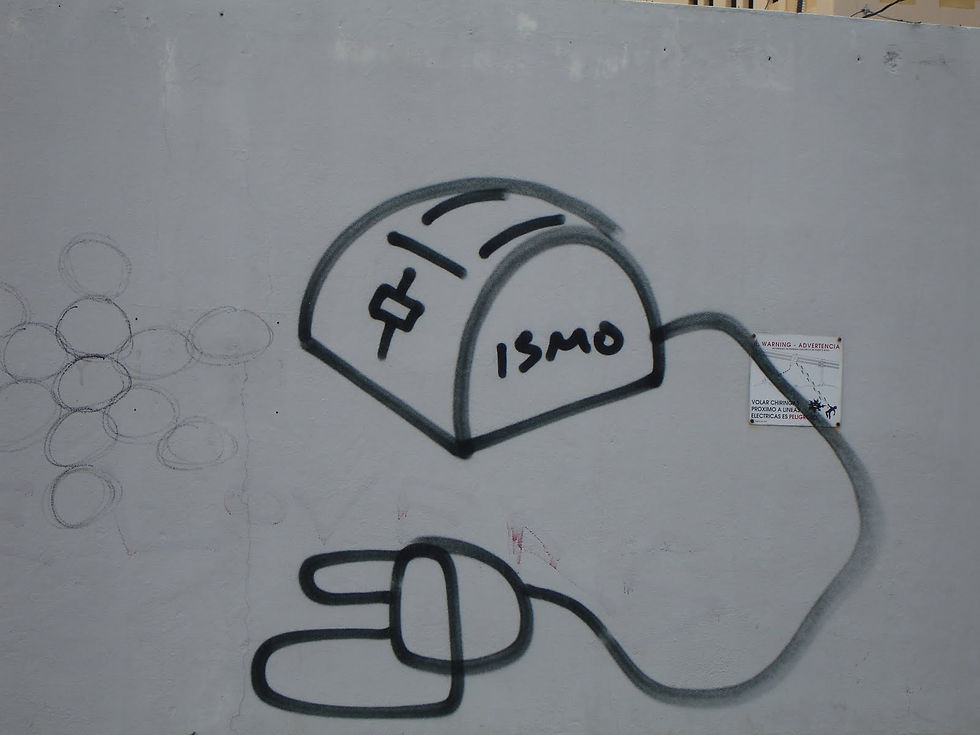Materiality and Everyday Art
- maremicro
- Dec 6, 2022
- 3 min read
Updated: Dec 27, 2022

In the Columbus Circle subway station, the subway tiles that have always been there, chips and all, are now framed. This is new. They want to say that these tiles are art, and they are. As curators are supposed to do, they provide the context and the attribution. These iconic old tiles, which people around the world recognize, and which have been widely reproduced, were made by the American Encaustic Tiling Company.

The subway in New York is beautiful, dirty and noisy, and I love it. As you walk through it on your way to where you are going, people play music, people perform, people ask you for directions or for money, and you walk through all of this, including the architecture and the materiality of the subway, the beaux arts bas relief tiles and faience designed by Heins and Lafarge between 1901 and 1907 and made by Rookwood Pottery of Cincinnati and Grueby Faience Company of Boston, and all the other designers who came after them, layers of different styles. It's no big deal. It's just what you do everyday, and all this is there all the time, all mixed together, for everyone.
I have always loved the materiality of the street, and of art in general. the texture of what we walk through and use everyday. When I go to museums, I want to touch the art, sit on it, use it. But that is usually not allowed. Art is special in museums, not part of the everyday. Often there are ropes or barriers that separate you from it. If you get too close, an alarm will go off or a security guard will tell you to stand back. If you want to see the Mona Lisa, you need to fight your way through a crowd to get close to this small painting surrounded by guards. It's worth alot of money. If you steal it you could get rich. The street is the opposite. Who is going to steal the subway? People sit on the benches, write on the walls, piss on the floor. Growing up, I loved to read the walls of the subway station: Keith Haring, SAMO, who I though was just schizo but turns out to have been Jean Michel Basquiat who is so appreciated now, and so many nameless people whose tiny writing covered the stations and the subway cars. They were just as important to the fabric of it all. (If you want to know more about the history of graffiti in New York. there is a good show right now at the Howl Gallery. It's there until January 29. They are also selling a book about the history of graffiti. Check it out.) But in the 1980s, they started to move the graffiti artists into galleries, and frame the art. It was not the same thing at all when they removed it from the flow of everyday experience.
In Puerto Rico the great boom of street art was in the 90s and the 2000s . I think I first noticed the "Ismo" toasters that started to appear on walls all over the place. Then

Pseudo Mero, and lots of other people. But it has faded. There is much less of this kind of outlaw fly-by-night street art than there used to be in the U.S., in Puerto Rico, in general.
What there is more of are murals that are commissioned and paid for. In Cincinnati, Artworks is responsible for the numerous large-format murals that are very visible throughout the city .
One of my favorite artists in Cincinnati is EMPR CTZNS. But no one is paying this artist

to place his stickers on mailboxes and electrical boxes, where they peel and fade and are half-covered by dirt and advertisements, and where you might not notice them until the third or fourth time you pass them, I like that he paints under bridges where only people who happen to be wandering around down by the Licking River might run across them. This art is not curated, not framed by anyone other than the artist, not subject to anyone's approval. You will not see it prominently displayed. You might run across it as you are walking around, feeling what it feels like to be in the places you go to, doing the things you do.


In Puerto Rico, Bemba is all over the streets, under bridges, on the sides of abandoned buildings. In a blighted, urban landscape, in a country where nothing works, they are what stand out and are hard to miss as you walk through hot, dusty, half abandoned city centers.











"You might run across it as you are walking around, feeling what it feels like to be in the places you go to, doing the things you do." Yes, that's exactly it. In my case, as I drive by, on a major highway, dodging the worsening potholes on my way to the Toyota dealership for a tune-up, wondering why the dickens THAT shuttered school near it can't be turned into something useful, and WHAT those horseback riders are doing alongside city traffic, and trying to ignore the proliferating billboards for senior healthcare, beer...... then, BEMBA speaks truths. It's a transient street-cry that, for once, I'd like to ponder and heed. Shouldn't we all?
This post is filled with so much that I love: tiles, street art, artworks, rookwood, puerto rico, murals, grafiti art. your writing and insights are a joy to read! Thank you so much for sharing. I've been making stickers, and you (and empr ctzns) have put an idea in my mind--i'm such a rule follower, but, you never know!!! lol!